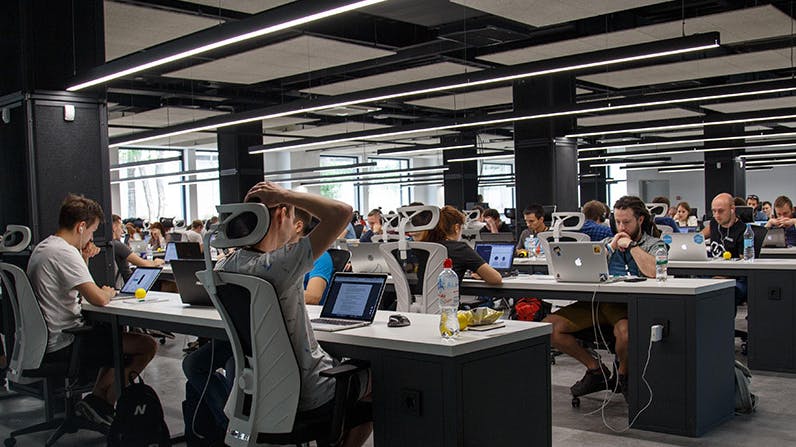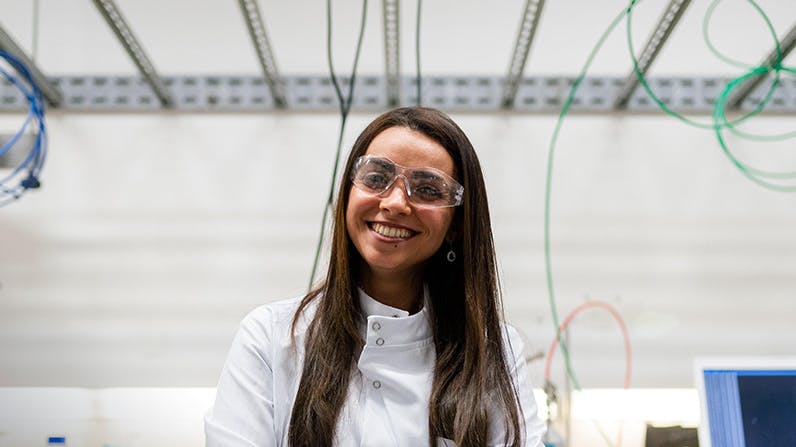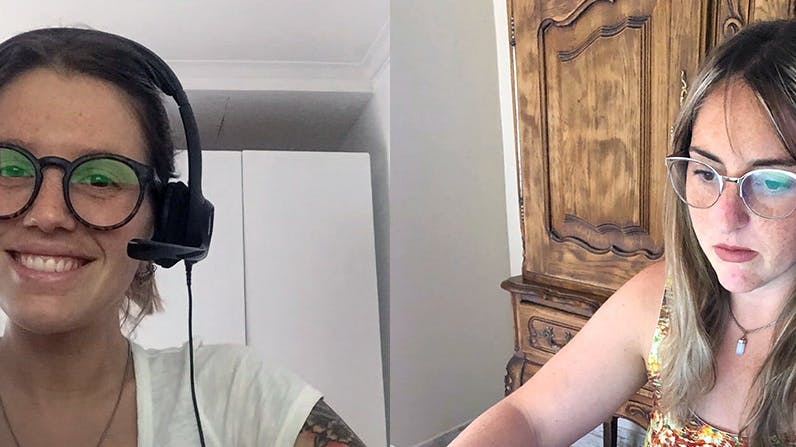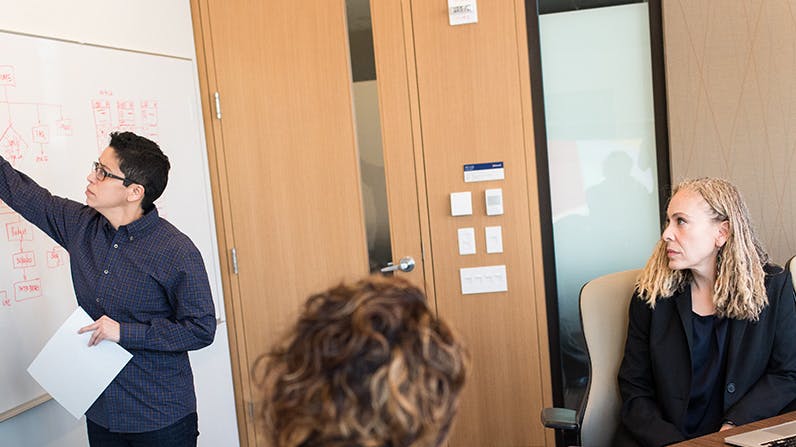9 min read

Women in technology: Has the gender gap narrowed?
As the year draws to a close, XOOR is reflecting on the role of women in tech. Besides conducting some research on the global and Argentinian scenario, we have looked at our own practices to see what is happening with the women who are part of our company. To this end, we spoke with some of our female team members to gain insight into their experiences, the obstacles they have faced for being a woman in the tech industry, and the positive changes that have been achieved.
At XOOR, we are constantly thinking about labor changes in every sense. These include new trends such as remote work, as well as the best options for hiring suppliers (such as onshore, offshore and nearshore).
This year, when we began our search for a new developer to join our team, we noticed that out of 29 applicants, only 2 were women. This made us realize that we needed to take a step back, talk to our teams and examine why women are still a minority in our industry and what the role of women in technology should be.
In this article:
- What does it mean to be a woman in tech? Making the issue visible
- Percentage of Women in Technology
- Technology Women in Argentina
- What obstacles did the women of XOOR face?
- Women in Technology: the challenges for companies
What does it mean to be a woman in tech? Making the issue visible

A few years ago, there was a rise in international groups of women who are trained and work in technology. These groups aimed to highlight the unequal opportunities for women in scientific and technological studies, as well as in employment and leadership positions. The ultimate goal was to achieve gender parity in both job opportunities and salaries.
Thanks to the increased visibility of organizations such as "Women In Tech" and "Chicas en Tecnología", the world is now aware that the absence of women in technology is not due to a lack of interest but rather a lack of opportunities.
XOOR's Full-stack developer, Engineer Danila Gallo, notes that while it is gradually becoming less difficult for companies to hire women, some still prefer not to or do not give them the same positions as men.

Meanwhile, Project Manager (PM) Sofia Calcaprina has observed that in her experience, product leader positions tend to be dominated by men, suggesting that it is a more "male-oriented" role.
One of our Quality Assurance (QA) professionals, Dolores Carrasco, emphasizes the need to **“challenge the idea that software development is an industry for men”. **
However, another XOOR QA analyst, Luisina Perfetto, is optimistic about the global transformation towards greater diversity and inclusion in the workforce, noting that “there is much more awareness of the importance of diversifying human resources within a company”.
Percentage of Women in Technology

Despite being a concern for decades, and even with public policies aimed at reducing the gender gap in technology, only 29.3% of women globally are involved in STEM (Science, Technology, Engineering, and Mathematics) fields, according to UN Women and UNESCO.
In addition, the study conducted in July 2019 shows that "only 35% of students in courses and programs in the STEM field are women".
Those gaps widen even further as people seek to deepen their studies, and this is particularly true when it comes to the proportion of women studying doctorates or dedicating themselves to research compared to men.
Similar statistics can also be found in the labor market. A report titled "Women in Science, Technology, Engineering and Mathematics in Latin America and the Caribbean" stated that only 22% of AI professionals worldwide are women. Furthermore, among those working in automated learning, only 12% are women.
International organizations suggest that this is due to various economic, cultural, social, and religious factors that have been ingrained in people's lives over many years, making it difficult to reverse the situation.
Technology Women in Argentina

Argentina is not exempt from the global gender gap in Science, Technology, Engineering, and Mathematics (STEM) fields. A study titled "A potential with barriers", published in 2019 by “Chicas en Tecnología”, the Institute for the Integration of Latin America and the Caribbean (INTAL), and the Inter-American Development Bank (IDB), revealed that only 33% of registered students in STEM fields in Argentina between 2010 and 2016 were women.
The report identified gender stereotypes as the main obstacle that discourages women from entering STEM fields. It cited a "masculinized environment, rigid practices that do not allow for a work-life balance, and differences in the valuation of technical skills”.
Our developer Danila Gallo, our Project Manager Sofia Calcaprina, and our QA analysts Luisina Perfetto and Dolores Carrasco, echo these findings in their personal experiences. They believe that the historical male domination of the IT sector is partly due to the low number of women who complete their studies in computer systems.
Therefore, completing the third year of a degree in Information Systems is a significant achievement for women in this field, considering the obstacles and complications they face.
What obstacles did the women of XOOR face?

While researching and reading about the current state of women in technology is important, it is even more valuable to hear the personal stories of those who work at XOOR.
In addition to the previously mentioned obstacles faced by women in STEM fields, such as difficulties in pursuing studies, entering the workforce, and advancing to higher positions, women in technology also face challenges in their relationships with colleagues. Some of the women at XOOR have shared their experiences.
Luisina Perfetto, one of XOOR's Quality Assurance (QA) team members, completed a full university degree and pursued a second degree, although she did not finish it, but still acquired knowledge. She has been working in technology for two and a half years, starting in a support role and then specializing as a QA.
She shared that in her previous jobs, she faced unpleasant situations with colleagues who “made inappropriate comments about my clothing, which made me feel uncomfortable”. She even experienced "several situations of harassment, where it is complicated to have to stop a colleague when you are the new one".

Dolores Carrasco is another QA analyst at XOOR, who completed her university studies and also took several courses to deepen her knowledge in technology. She joined the tech industry a year and a half ago.
Dolores explained that during her time in different companies, she had encountered debates with a high level of machismo, where women's opinions and contributions were not given the same weight as those of men.
Danila Gallo, currently a Fullstack developer at XOOR, studied Information Systems Engineering and has been working as a developer for four years.
In a company where she had previously worked, she experienced harassment, but luckily the management took action. That person “tried to contact me through various social media channels, and when he received no response, he started to tell others not to talk or greet me. I had a very bad time”.
These situations show that in addition to all the difficulties to get to occupy jobs in technology, once inside the company, the challenge does not end. On the contrary, women who are more qualified than many men have to "put up with" uncomfortable situations and the fact that their opinions are not valued, and insist and not give up in order to fulfill their dreams: to grow in the IT industry.

Sofia Calcaprina is Project Manager at XOOR. She studied Graphic Design at UBA and also took PM courses, and has been working in the technology industry for four years.
According to her, the main obstacles she faced in this industry were "joining an all-male team and making myself heard". She explained that team leaders tend to prioritize the views of their male colleagues.
Moreover, she also could not escape workplace harassment. She recounted that in one of the companies she had worked for, her boss "hired people for their looks, as he wanted to see attractive people in his office, and anyone who did not meet his standards was made fun of to their face."
Women in Technology: the challenges for companies

Promoting women's development in technology and gender parity will enhance innovation and inclusive practices within companies. In this context, companies face challenges in promoting gender equality and must actively participate in reducing the gender gap.
The first aspect to address is creating safe and inclusive environments. To achieve this, companies can organize specific workshops to educate employees and professionals on detecting "micromachismos" and promoting good practices among colleagues, irrespective of gender. Furthermore, the human resources department must take responsibility for hiring people without discrimination, which leads to the second aspect to consider.

Achieve gender parity within the company. It is essential to prioritize women in science and technology, even though it may be challenging to attract them to these areas. Some international companies have already introduced exclusive job opportunities for women.
The third and most crucial aspect is to ensure equal pay, promotion, and career advancement opportunities, as well as equitable hiring conditions and benefits.
Finally, it is vital for companies to be receptive to women's opinions and concerns. Listening to their ideas and implementing them on a trial basis can potentially benefit the organization.
At XOOR we are aware that we still have a long way to go to achieve parity in our company and we are already working to reverse it! So if you are wondering how to get ahead as a woman in tech, we invite you to browse our job searches by clicking here and send us your CV!